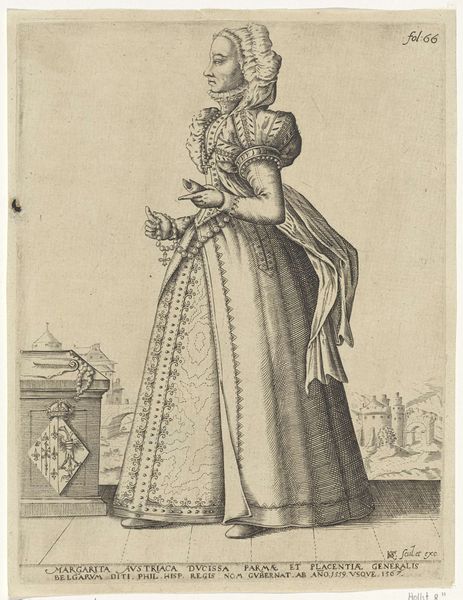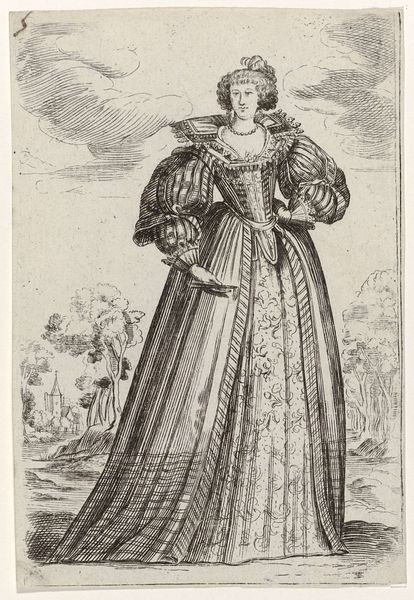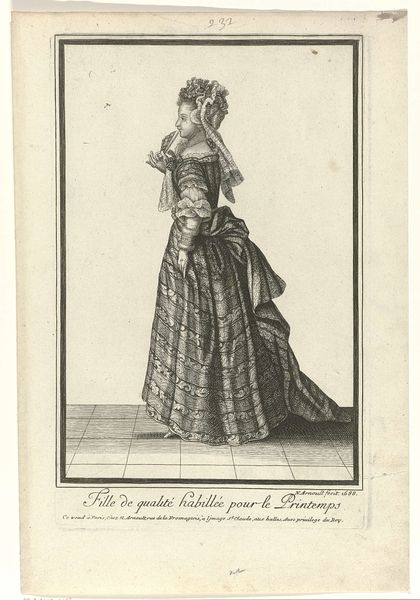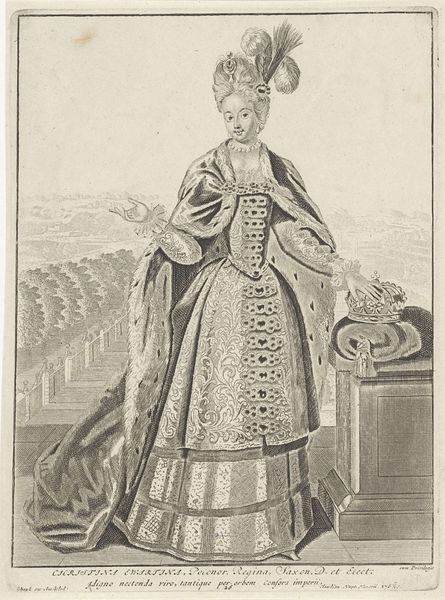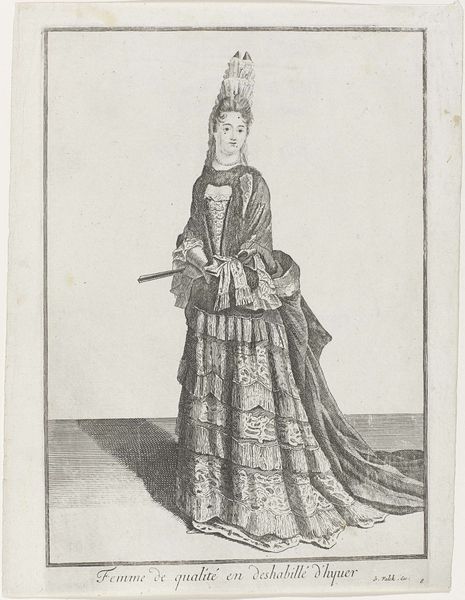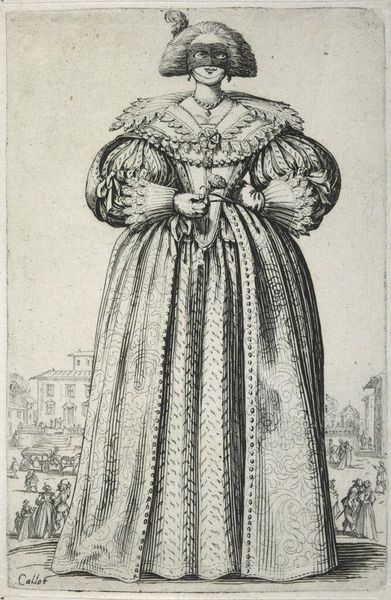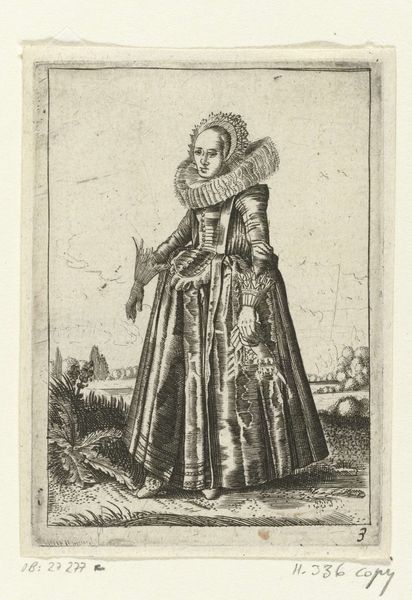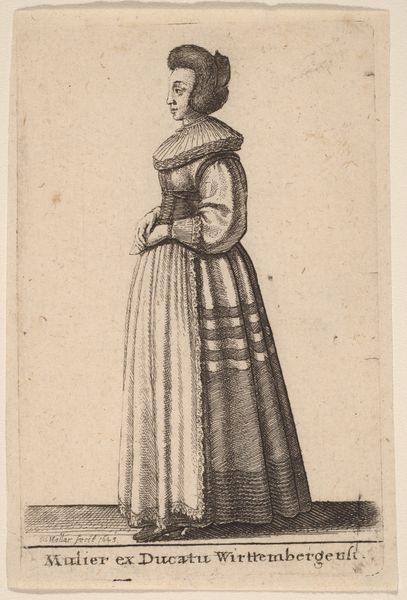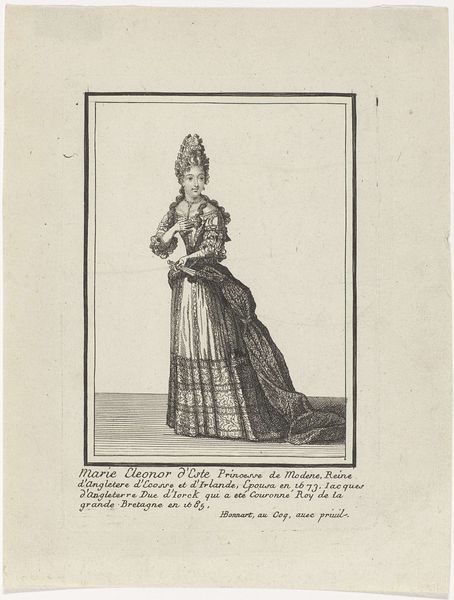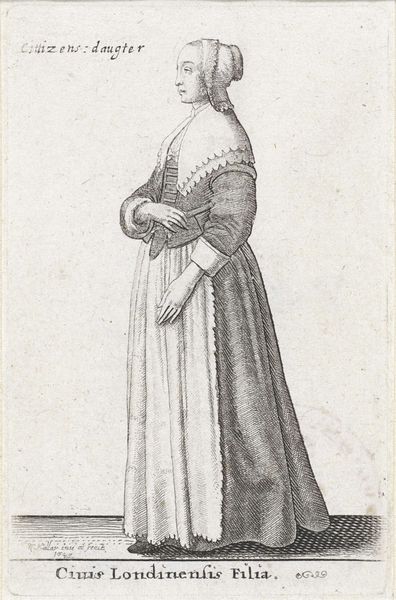
Portret van Maria van Hongarije, landvoogdes der Nederlanden before 1614
0:00
0:00
karelvansichem
Rijksmuseum
print, engraving
#
portrait
#
pencil drawn
#
medieval
# print
#
pencil sketch
#
old engraving style
#
pencil drawing
#
pen-ink sketch
#
portrait drawing
#
history-painting
#
engraving
Dimensions: height 186 mm, width 142 mm
Copyright: Rijks Museum: Open Domain
Editor: Here we have "Portret van Maria van Hongarije, landvoogdes der Nederlanden," a print made before 1614 by Karel van Sichem. The engraving captures Maria in exquisite detail; I’m curious about the visual construction itself. What do you see as significant in its composition and the use of line? Curator: Let’s consider the formal elements. Notice how the artist uses line to define the figure against the background, a deliberate choice given the print medium. Observe, too, the sharp contrast that structures the image. This is further nuanced by areas of denser hatching that indicate shadow and volume, while the lines in the background are spare to give an effect of distance. The interplay between flatness and depth—how does that strike you? Editor: It's interesting that you point out the contrasting areas of detail, like the difference between the column and the castle in the background. Is that flatness in the background intentional? What would you call the aesthetic of its lines? Curator: The considered treatment of the ground, with both linear perspective and atmospheric indication, reveals a sophisticated engagement with the pictorial space. I hesitate to apply any contemporary descriptors that might constrain our view. Note that the castle does not comply to all the "rules" of atmospheric or linear perspective: observe the line weights used in its delineation and those in the architectural elements near Maria. To what purpose? Editor: You’re right, labeling might oversimplify. So the deliberate flattening is, in itself, a device to draw our eye, and therefore a strength. Thanks, I've learned how to analyse art using shape, lines, and depth as tools of understanding the core features of art. Curator: Precisely! Formal analysis empowers us to understand the core components and aesthetic ambitions in diverse forms of art.
Comments
No comments
Be the first to comment and join the conversation on the ultimate creative platform.

